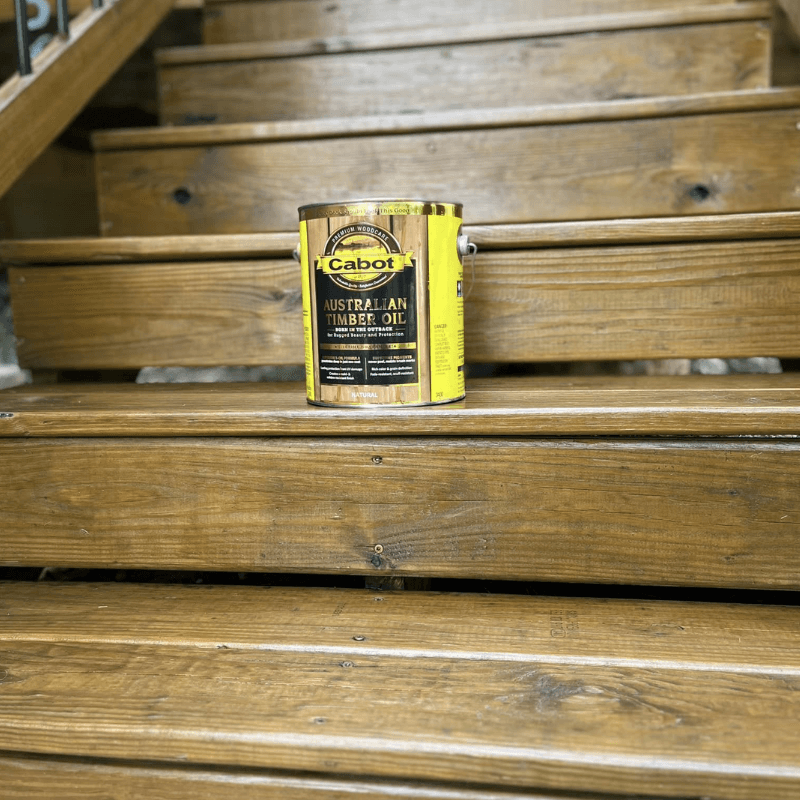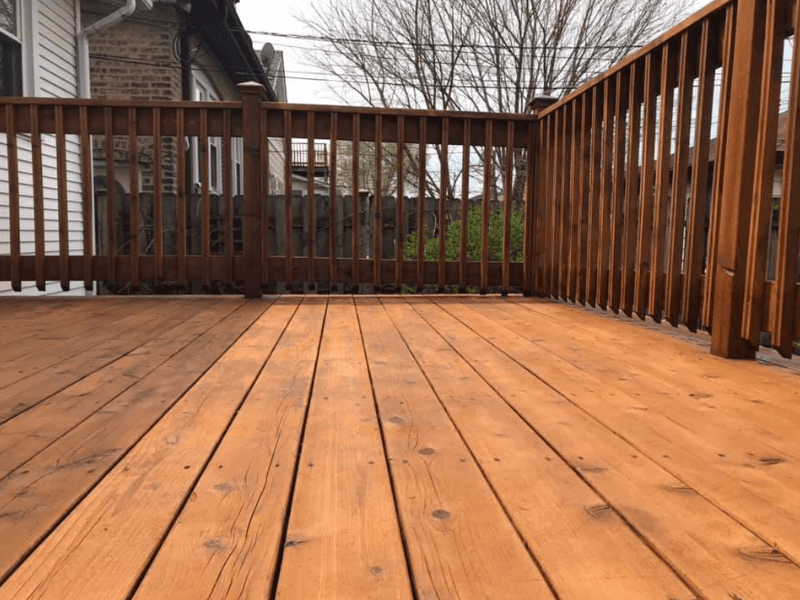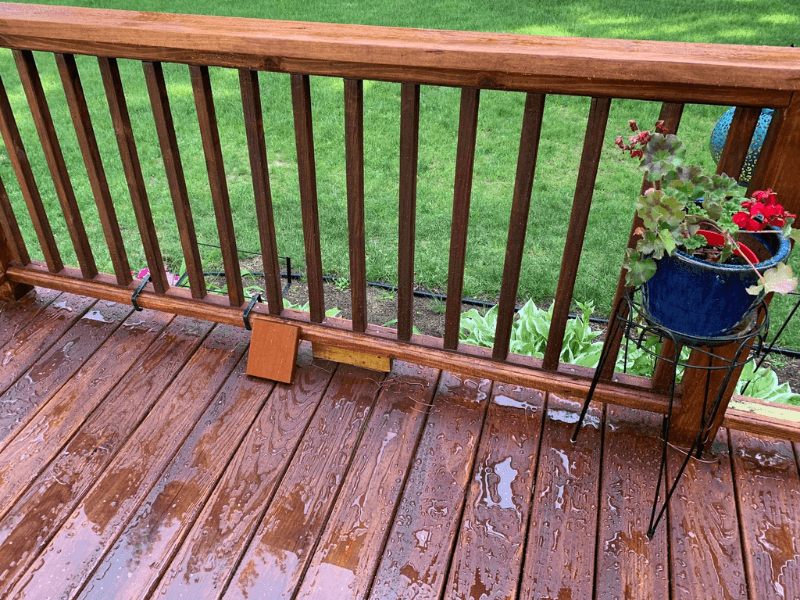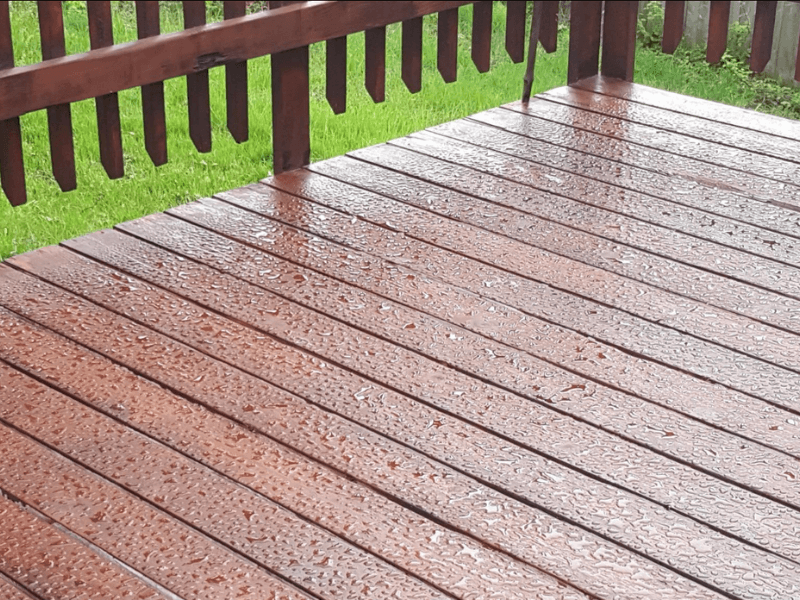If you want to restore and rejuvenate your shabby old deck, you’re in the right place. Depending on the condition of your old deck, you can spruce it up to your desired look and breathe new life into it. In this article, we review our best stains for older decks. However, before applying a stain to your old deck, ensure you’ve done the necessary repairs for better results.
Our Best Deck Stains for Old Decks
- Our Best Stain for Old Decks: Cabot Australian Timber Oil Stain
- Best Water-Based Stain for Old Deck: Defy Extreme Wood Stain
- Best Solid Stain for Old Deck: Cabot O.V.T Solid Color Oil Stain
Our Best Stain for Old Decks
1. Cabot Australian Timber Oil Stain
The Cabot oil-based deck stain is the best product to restore your old and weathered deck. It is easy to work with, has no strong odor, and offers superior protection against elements.
Once you’re done preparing your older deck, the best stain you can use is the Cabot Australian Timber Oil Stain. The Cabot deck stain comes in nine different colors you can choose from for a customized appearance. The deck stain was easy to work with and didn’t make a huge mess. The odor is also not stronger than expected with an oil-based deck stain.
When you stain your deck in the right conditions, the Cabot oil-based deck stain will take up to 24 hours to dry up before you can apply a second coat. The stain is fairly opaque, which does a good job of hiding imperfections on older decks for a beautiful appearance.
Overall, we highly recommend the Cabot Australian Timber Oil Stain for anyone looking to restore an old or weathered deck. However, make sure you put in the work and properly prepare your deck before applying the deck stain.
Best Water-Based Stain for Old Deck
2. Defy Extreme Wood Stain
With seven different colors to choose from, not only does this wood stain look great, but it also provides excellent protection against different elements. It's easy to apply and offers excellent performance over time. The Defy Extreme wood stain is an excellent water-based stain that will protect and restore the look of your deck.
For a water-based deck stain, the Defy Extreme is a good product to check out. The deck stain comes in different colors, from butternut, cedar tone, redwood, natural pine, and much more. Honestly, it looks better than we envisioned, and after applying it, its appearance only gets better.
Applying this deck stain is smooth and easy, and it takes about 5 hours to dry in the right conditions. Unlike an oil-based deck stain, this has no odor at all. It also holds up quite well under rain once it is fully dry. For a water-based stain, the defy extreme is also better to protect against UV rays.
Overall, we were happy with the Defy Extreme Deck Stain and Sealer results. The different available colors are beautiful and bring an old deck back to life.
Best Solid Stain for Old Deck
3. Cabot O.V.T Solid Color Oil Stain
For a solid deck stain, the Cabot O.V.T is an excellent option to check out. It is great for masking surface imperfections and going into cracks for an even better appearance.
The Cabot solid color oil-based deck stain is a good option for badly weathered decks. The solid color is great for hiding flaws and other surface imperfections for a better appearance. The deck stain also penetrates the wood fibers for an even look.
The deck stain is also easier to apply, but like all oil-based deck stains, you’ll give it around 24 hours to dry before adding a second coat. The deck stain also holds up quite well to the sun and rain.
Overall, if you want to restore a badly weathered older deck, a solid color deck stain, like this one, is a good option. This will hide imperfections, and the oil penetrates the wood fibers for an even appearance.
Choosing a Stain for an Old Deck
- Oil-based vs. Water-based Deck Stains
- Deck Stain Opacity Explained
- Deck Stain vs. Stain & Sealer
- Deck Stain Applicators
Oil-based vs. Water-based Deck Stains
The two major types of deck stains are water- and oil-based deck stains. Each of these two deck stains has its advantages and disadvantages are well as their differences.
Oil-based deck stains have been around for a while, and these can rejuvenate, preserve, and enhance a deck’s natural grain and texture. They also penetrate into the wood and offer better water and moisture protection. Oil-based deck stains are also mold and mildew resistant, which can help prevent rotting or decay.
However, even with the many advantages, oil-based deck stains also have their drawbacks. These stains have a higher number of VOCs, take longer to dry, and do not last as long as water-based stains.

Cabot Australian Timber Oil Stain
Water-based deck stains are newer, and thanks to advancements in technology, they are environmentally better, dry up faster, and, best of all, are more durable. Unlike oil-based deck stains, they do not fade in color over time and can be cleaned up easily with soapy water.
Water-based deck stains also allow a deck to breathe. Thus, moisture is not trapped in the wood. They also do a good job of blocking UV rays and resisting the growth of mold and mildew. However, you need to be extra careful when applying water-based deck stains and also brush thoroughly because water-based stains might peel off if you apply them in excess.

A Deck Stained With Defy Extreme Wood Stain
Deck Stain Opacity Explained
Desk stains, unlike paint, enhance the natural beauty of wood and allow you to see the natural grain and texture. The opacity of a deck stain is the degree of transparency or opaqueness. Deck stains are available in three different opacities, which you can choose from.
Clear or transparent deck stains contain very little to no color pigment and only impart a hint of color to the wood. Transparent deck stains don’t change the overall appearance of the wood. However, they accentuate new wood showing off the beauty of the natural grain. Clear deck stains are best for new decks, but with nothing to reflect UV rays, they’ll need to be applied at least once a year for the best protection.

Cabot Australian Timber Oil Stained Deck Under Rain
Semi-transparent deck stains are the most popular of all deck stain opacities. These stains will impart a noticeable color to your deck, but they still allow the wood grain and texture to shine through. A deck built out of western red cedar wood would benefit from having a semi-transparent deck stain applied.
Opaque or solid deck stains have the highest percentage of color pigment and are just like paints. They hide the wood’s grain, texture, and other flaws and surface imperfections. Solid deck stains are best for older decks because they’ll help hide flaws and also rejuvenate them. They also offer the best protection and can last up to five years.
Deck Sealer vs. Stain & Sealer
Deck sealers are usually clear or transparent and protect your deck from different elements such as moisture, precipitation, mold & mildew, insects, and much more. Sealers are best for new decks as they allow you to show off the wood grain and texture of the deck. However, clear sealers offer no protection against wood graying caused by harsh UV rays from the sun.

A Deck Stained With Cabot Australian Timber Jarrah Brown Oil Stain & Sealer
A deck stain and sealer combines the stain and sealer. These are semi-transparent or opaque in color and offer protection against different elements and from the sun’s rays. Deck stain and sealer will, however, impart color to your deck, so they’ll hide some of the deck’s natural beauty. However, they offer better protection and will last longer than a deck sealer.
Most of the stains we have featured in this article are deck stains and sealers. These will provide better protection for your old deck and ensure it lasts for a longer time to come.
Deck Stain Applicators
You can use several applicators when applying a deck stain to your old deck. You can use a deck brush, rollers, stain pad, or a sprayer. Check out our guide on the best deck stain applicators.
For older decks, we recommend you use a deck brush such as the Precision Large 7-Inch Deck Brush. This will help push the stain into the cracks of the deck for better protection. A brush will also give you more control and even application. A deck brush is also faster than using a normal paintbrush because it will hold more stain and make it faster to apply a stain.
This 7-inch precision deck stain brush is great if you want to stain a deck quickly. It holds a lot of stains, and the bristles are long enough to get into the nooks and crannies in the wood. Despite the size, it is also easier to clean and holds up well for a long time. The great thing about the brush is that you can add an extension handle, which means easier effort and faster stain application.
We recommend using a larger roller for rollers, and the nap size should be larger. A larger nap size means the length of the fibers is more extended from its backing, thus not only picking up more stain, but the fibers can get into the cracks and gaps of an old deck.
For a larger deck, a deck sprayer is what we recommend. With a deck sprayer, you’ll paint the deck in a shorter time and use less effort. However, we recommend you have a second person who will follow back, brushing the stain into the cracks for better protection. Use a deck brush for back brushing to make work easier.




